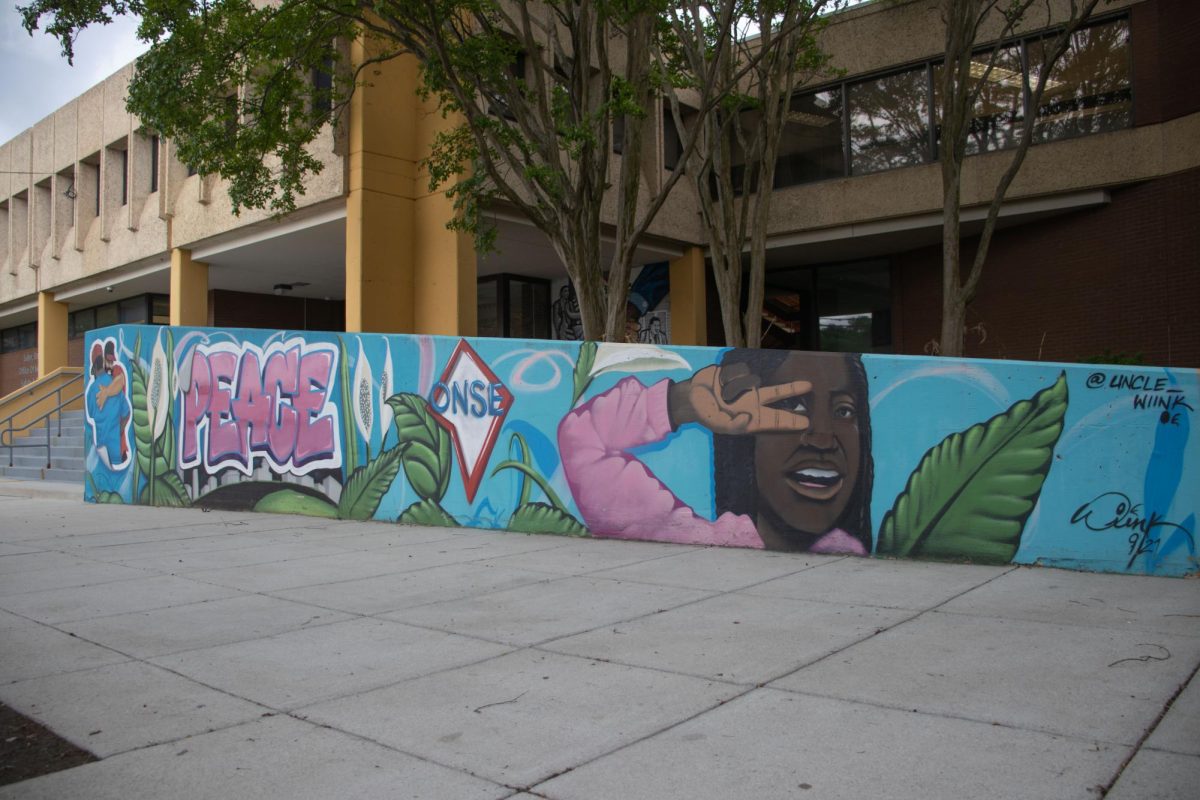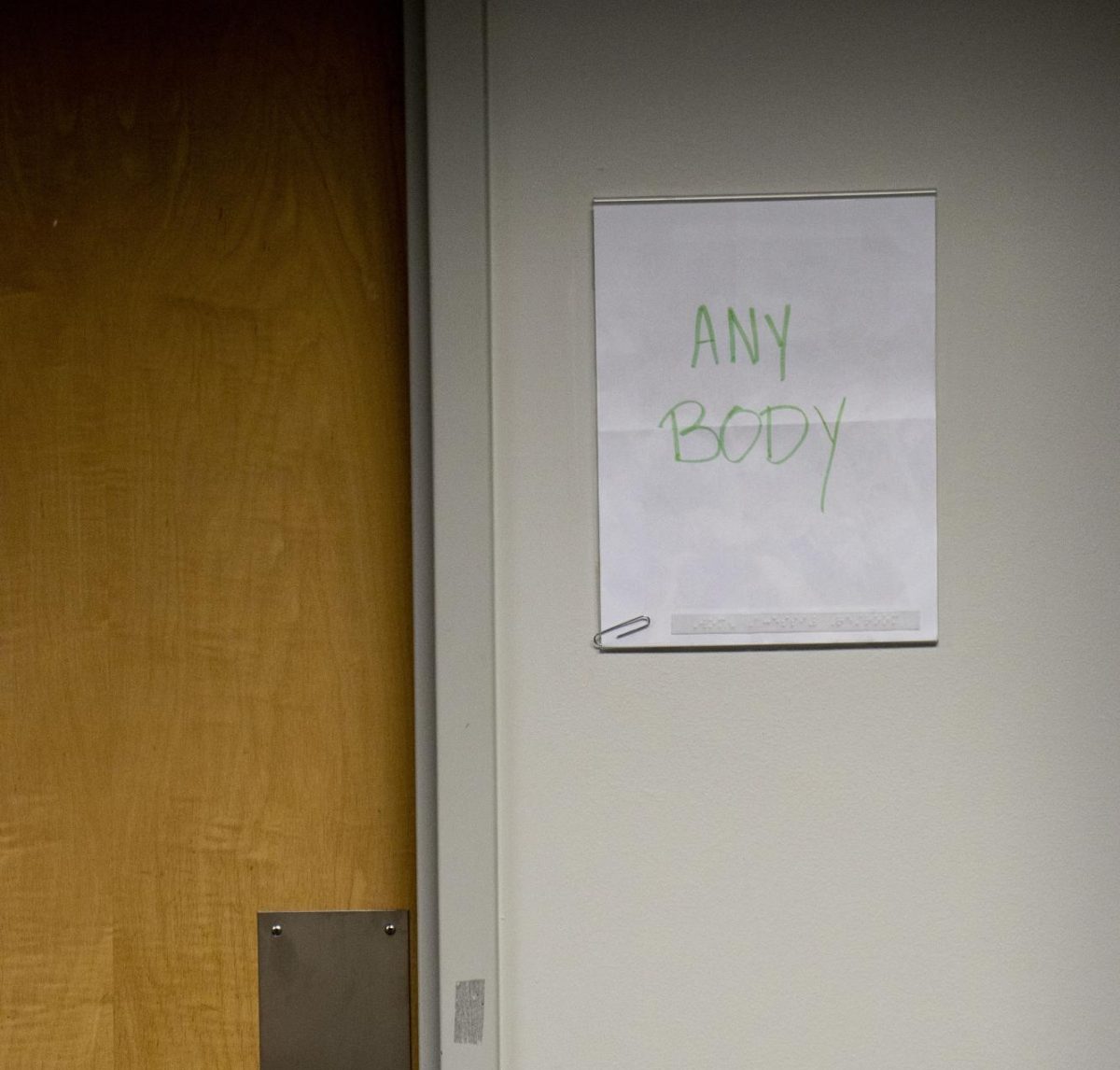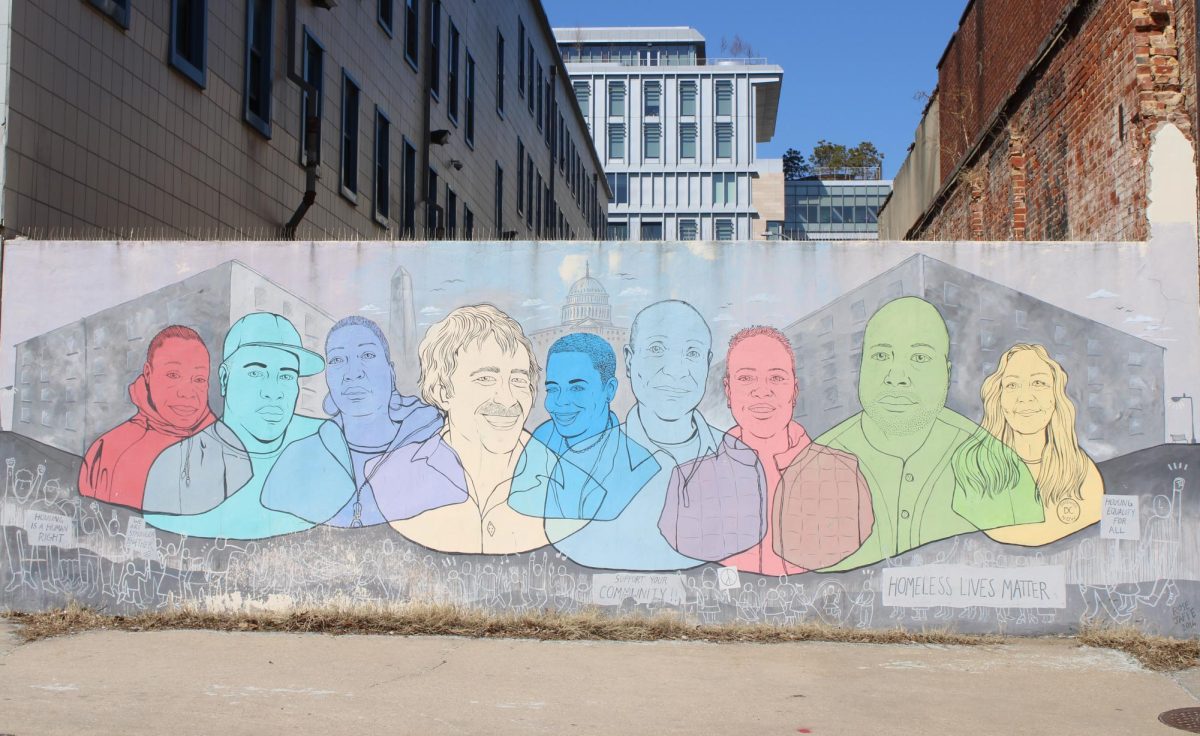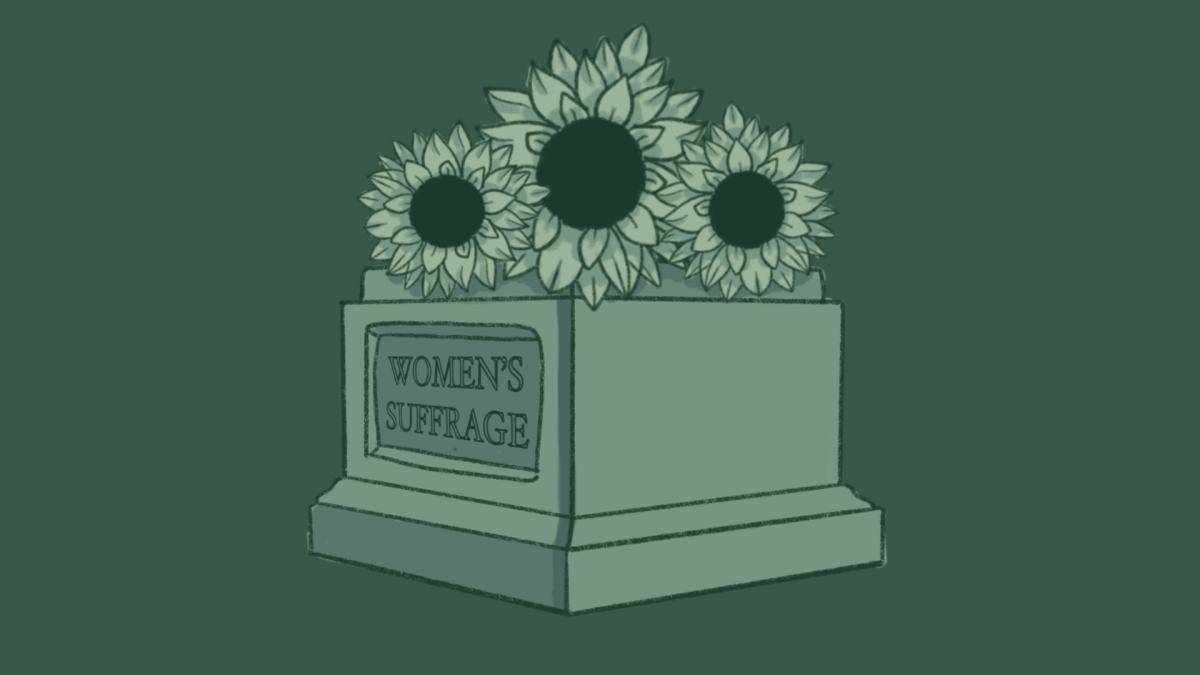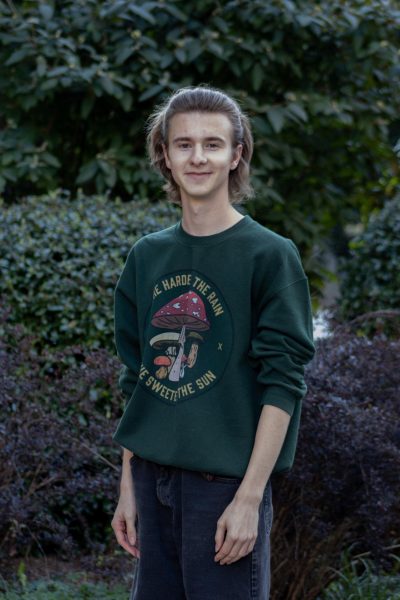Activist Philipos Melaku-Bello saw a form of violence rather familiar to him on Friday, Oct. 13.
He sat with fellow-activist Neil, in the same place he has for four decades, when a group of 25 people approached them, calling obscenities. When someone in the group moved too close for comfort for Melaku-Bello, Neil stepped in between them, only to feel the head of the counter-protester hit his.
Months earlier, Melaku-Bello was watching night fall on their vigil when two visitors used a machete to hack up the tent, which the activists use for keeping food and warmth. Melaku-Bello quickly wheeled toward the opposite side of his stand, avoiding what he today considers an “attempt on his life.”
The loosely fastened signs on the tent behind Melaku-Bello call for peace around the world but evoke just the opposite in some passersby. To Melaku-Bello, it’s an unfortunate part of the vigil.
Both attacks were just two of many that the White House Peace Vigil has endured since its inception in 1981. The four members have taken six stonings, the swings of machetes and plenty of spit that might send a weaker person home, Melaku-Bello said. However, their goal of peace keeps them steadfast to their post, despite growing concerns about violence and an aging membership.
After 42 years of protest along the side of Pennsylvania Avenue, the age of the vigil’s volunteers threatens the future of the movement, Melaku-Bello said. He said he remembers a time when the volunteers were in their late twenties and early thirties. Now, two 68-year-old volunteers are the youngest in the vigil. Melaku-Bello is 60.
Melaku-Bello said health is of grave concern to some of the members, especially after longtime volunteer Concepción Picciotto lost her life in part due to a chronic health condition. She was very important to the life of the vigil, Melaku-Bello said.
Melaku-Bello, who suffers from the same condition, said that he attributes his age to his commitment to the vigil. He is set in his ways, he said.
Melaku-Bello said he continues to make the 22-mile round trip from his home to the vigil for every shift. He can be spotted wheeling himself toward the vigil almost every weekday afternoon. He said he worries the vigil might come to an end without him to organize it.
“I’m pretty sure it would cease to exist,” Melaku-Bello said. “I don’t want it to disappear.”
In 1981, 42 years earlier, activist William Thomas brought two picket signs to Lafayette Park. One depicted the nuclear symbol with a bold red slash through its center. The other read “Wanted: wisdom and honesty.”
Thomas was Melaku-Bello’s godfather, and the two maintained a connection through postcards and occasional visits to Melaku-Bello’s home in California, Melaku-Bello said. On the 20th day of Thomas’ vigil, Melaku-Bello said that he was in Virginia touring with his band. The group came from their show to support Thomas’ protest and remained off-and-on throughout the subsequent years, Melaku-Bello said.
Nearly five years later, Picciotto joined Thomas at the vigil. She was willing to take seven-hour shifts nearly every day, Melaku-Bello said.
Melaku-Bello said that their movement was born during the start of the Reagan presidency, a socially and economically conservative administration that the vigil volunteers opposed. The era’s politics “heightened” vocal opposition to the vigil, Melaku-Bello said.
Mir, a vigil volunteer who declined to give their last name, said that those higher tensions returned during the Trump era. Visitors would call out, “What about white lives?” in response to the vigil’s signage supporting the Black Lives Matter protests, Mir said.
Mir said approaching these incidents with a calm disposition and level head was a necessity.
“They were willing to punch you down and send you to the hospital,” Mir said. “So you really had to see it in a way where you would keep yourself safe and also keep other people safe.”
Melaku-Bello said that without the vigil behind him, he might already have been attacked from behind. But counter-protests have also attacked the vigil itself, including the incident involving the machete, Melaku-Bello said.
On Nov. 2, 2023, Neil, a consistent vigil volunteer for nine years, watched guard over the vigil. It was one of the colder days of the season with temperatures reaching a low of 34 degrees. He wore a jean jacket and baseball cap.
He spoke with a passerby who was expressing criticism against the vigil’s views on Israel, one of whom yelled toward Neil, standing 10 or so feet away from the vigil. Neil spoke back in an assertive tone, but without raising his voice.
He was joined by 81-year-old Marty, a retiree and self-described “friend of the vigil,” who has made Pennsylvania Avenue his office for five and a half years. Marty declined to give his last name. Motivated by frustration toward the Trump administration, Marty said that he crafted a sign reading “Hate Won’t Make America Great” in red and blue font that he wears on his chest.
“My mental health has been intertwined with my ability to come down here and talk to people,” Marty said.
Marty said that supporting peace from the shady side of Pennsylvania Avenue relieves his frustration. Although he works alongside the volunteers, he said that he won’t join them. He said that he knows the vigil needs “physical help,” but at his age, the work required is too much. Marty said that he does keep an eye on the vigil when volunteers need a bathroom break.
Leaving Lafayette Park comes with a high risk to the vigil. If the vigil goes unattended, the park rangers have the right to disassemble their signs and tent, Melaku-Bello said. According to the Code of Federal Regulations, demonstration structures are allowed to be removed by Park Police after a twenty-four hour notice. They will often give Melaku-Bello a call ahead of destroying the setup, Melaku-Bello said. The thought of losing their place has pushed some members to take day-long shifts, Melaku-Bello said.
“They’re saving me on the back end of my life,” Melaku-Bello said, referring to the others. “I mean, even if I died today–maybe I would have died at 57 if I had even less–I used to do 96 [or] 72 hours straight.”
Marty said that he has seen volunteers, who he calls “placeholders,” come and go from the vigil, but said that Melaku-Bello, Neil, and a man named Cody are the only ones with the commitment to stick around.
It’s partially why the vigil is unwilling to get arrested, like others, for issue attention, Marty said.
“Particularly because their duty is here,” Marty said. “If you take Neil, Cody or Philipos out of the equation, it puts a burden on the other volunteers.”
The most recent addition to the vigil is Mir, who is in their late twenties. During the 2020 Black Lives Matter protests, Mir came to the park and became acquainted with Melaku-Bello. Mir said they help Melaku-Bello with the upkeep of the vigil four times a week and see him safely back toward his route home.
Aside from the groups of people who are receptive to lectures from Melaku-Bello or a flyer from Neil, some people also offer more tangible support.
Volunteers receive small donations of spare change or food from people passing by to help keep them nourished, Melaku-Bello said. On Nov. 1, a woman in a sweater and winter coat passed by to leave $20 for the volunteers.
One Reagan administration employee would bring the morning volunteer a coffee on her way into the Eisenhower Executive Office Building every day, Melaku-Bello said. It became a daily routine: one coffee for her, another for a vigil watcher, Melaku-Bello said.
Others offer support by defending the vigil from belligerence, Melaku-Bello said. A man, who Melaku-Bello calls “Gary,” or “Chill Will,” takes time from selling stuffed animals and headphones on the avenue to lend his height when the vigil needs it, Melaku-Bello said.
When Neil and Melaku-Bello were approached by the counter protesters on Oct. 13, Gary lent his height to scare off the 25 individuals, including the man who spit on him, Melaku-Bello said.
While age and health threaten the longevity of the movement, Melaku-Bello said these are not concerns while defending the vigil from antagonism, even when that antagonism is violent. They have “Gary” and the convenience of nearby Secret Service agents, Melaku-Bello said.
Melaku-Bello said that he isn’t dissuaded by violence against him. Instead, he said that he finds it invigorating to his activism.
“An incident like that makes me more fierce in wanting to keep on doing it,” Melaku-Bello said. “Because if there’s morons like that, that need to know that peace is better than violence [and] hatred.”
Melaku-Bello said that he has seen his Tibetan flag torn after six different incidents, the Palestinian flag at least nine. He has replaced them each time.
“My love for the civilians of the planet is stronger than their hatred for activists [and] for me,” Melaku-Bello said.


